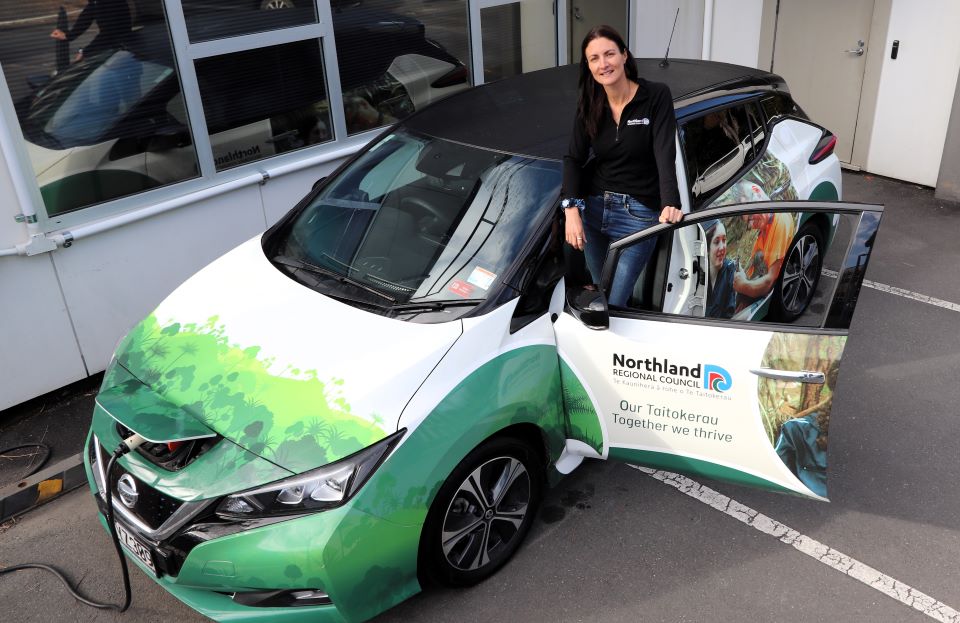
21 February 2025
Leading the charge on clean energy
Northland Regional Council is leading the charge on clean energy with multi-faced electrification and carbon emission reduction initiatives.
The council started mapping its carbon footprint in 2014, kicking off with an energy audit on its ageing main office in Whangārei.
“One of the key findings was that our Whangārei office would be 20 times more energy efficient if it were a new building built to latest energy efficiency standards,” Joseph Camuso, Council’s Rivers Manager and a personal advocate of clean energy, says. “Our air conditioning system in particular was a big energy hog.”
To help transition to cleaner energy, the council undertook a three-phase project to replace its energy-hungry air conditioners, install rooftop solar panels, and introduce electric vehicles into its fleet.
Starting with a 20-kilowatt solar array installed in 2014, the council added another 13 kilowatts in 2023, and now has 108 solar panels on the roof of its Whangārei office, which services just over 300 staff, and 250 panels on its newer Dargaville office, a shared office space servicing Kaipara District Council staff as well as four regional council staff.
The panels at the Whangarei office generate about 150 kilowatts of electrical energy per day on average, enough to drive about 1,000 electric vehicle kilometres per day. They cover about 20% (per cent) of the energy needs of the Whangārei office, and about 45% of the energy needs of the council’s Kaipara service centre. The Kaipara solar array alone saves around 3.62 tonnes of carbon dioxide emissions each month, the equivalent of planting 61 trees.
Adding to the emission – and cost – savings are six full electric vehicles (EV) and 20 plug-in hybrids that have been added to the regional council’s fleet.
Vehicle Fleet Coordinator Glen McKenzie says the council has a policy to ‘green’ its fleet, with green credentials being one of the criteria used to assess fitness for purpose.
“All things being equal, we’ll go for the greener option,” Glen says. “If we can find an EV or a hybrid that will do the job, I’m happy to go down that path. If not, we still try to reduce carbon emissions as much as possible – for example, changing less efficient petrol or diesel vehicles to more efficient ones with lower emissions that can do the same job.”
“EVs can be more expensive up front, but we save on fuel and maintenance is about 50% cheaper. We can also offset the costs in part with solar power generated from our panels.”
Glen says council staff have embraced using electric vehicles.
“As an organisation we’re very environmentally focused, so we’ve had great buy-in from staff on changing from fossil fuel vehicles to hybrids and full electric vehicles. For some, our fleet vehicles are their first experience of driving an EV, so it helps to reduce anxieties and build confidence about different technologies and expose people to new experiences. This has led to many NRC staff opting for an EV for their personal vehicle.”
Posted in: Regional, Shift to Clean Energy